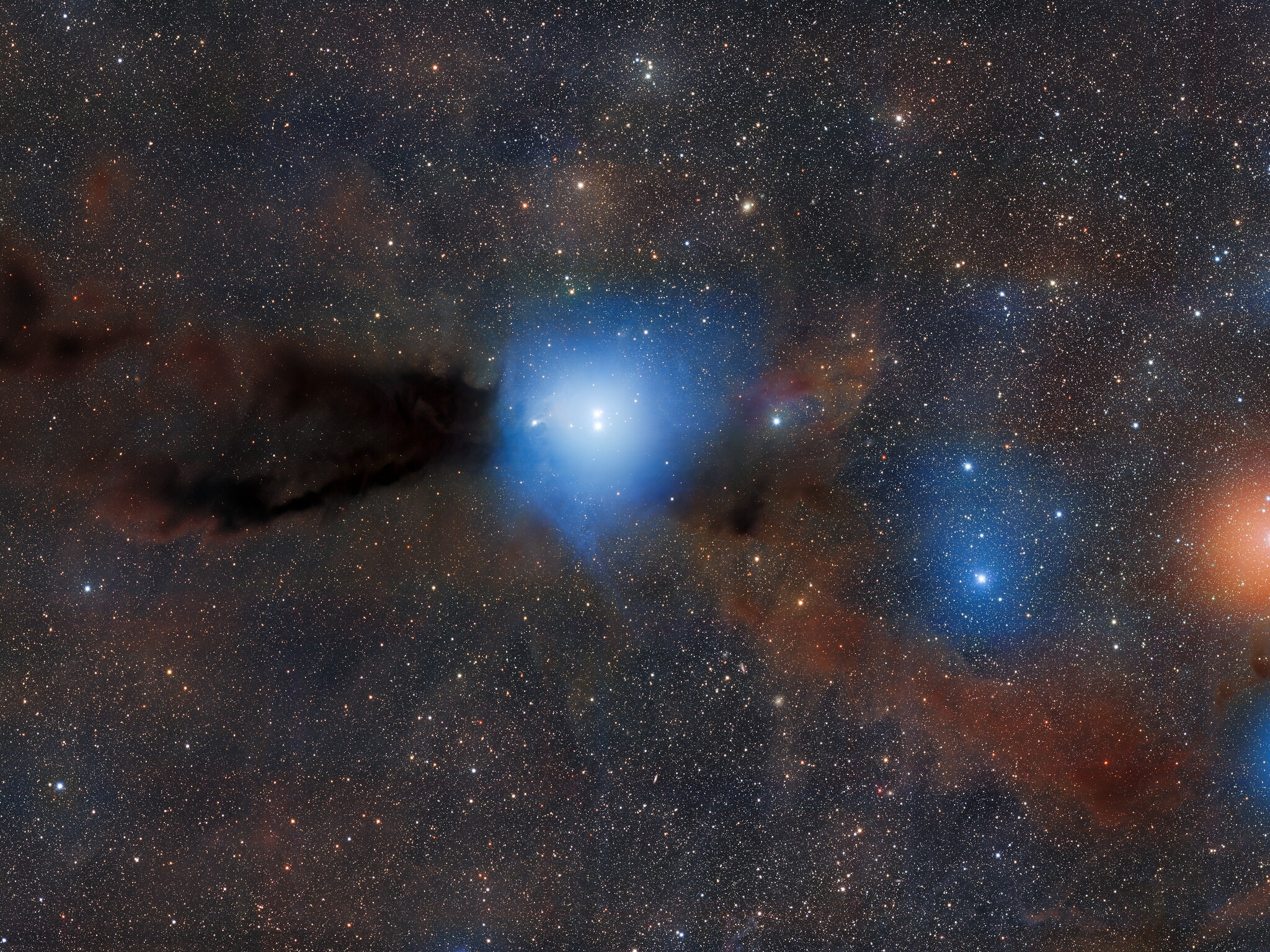Astronomers have obtained the most detailed photo of the Lupus 3 nebula in the constellation Scorpius, which is located 600 light-years from Earth. It is a dark nebula in which hot stars are born from condensed masses of gas and dust. The photo is published on the website of the NOIRLab Laboratory. The new image was obtained using the Dark Energy Camera (DECam) installed on the 4-meter Victor Blanco Telescope at the Cerro Tololo Inter-American Observatory in Chile.

Lupus 3 has an irregular shape and resembles a snake in outline. Like most dark nebulae, Lupus 3 is an area of active star formation that contains many protostars and very young stars. In areas of increased density due to external influences, gravitational compression begins, during which temperature and pressure increase, and as a result a protostar is born.
Another type of nebula that can be seen in the photo – Bernes 149 – refers to reflective nebulae. It is also a cloud of dust and gas, but less dense. Instead of blocking the light from the stars, this cloud reflects this light, due to which the cloud appears to glow. Unlike emission nebulae, in which gas glows because it is ionized, a reflective nebula does not produce its own light.
Young stars HR 5999 and HR 6000
Inside the nebulae, you can see bright points of light, which are young stars. Right in the middle of the image are two stars – HR 5999 and HR 6000 – which are blue because of their young age. They are only 1 million years old. This means that they are not yet main sequence stars, but rather protostars that glow due to the strong gravity that compresses the matter inside them, warming it up.
When stars are born and become young, they emit strong stellar winds that blow away dust and gas from the environment. This prevents more stars from being born nearby, which creates an equilibrium that keeps the number of new stars being born in balance. Studying star formation sites, such as these nebulae, can help astronomers learn more about this process and about the early stages of the stellar life cycle.
Earlier we reported on how VISTA created an atlas of the birth of stars from a million photos of star nurseries.
Follow us on Twitter to get the most interesting space news in time
https://twitter.com/ust_magazine

